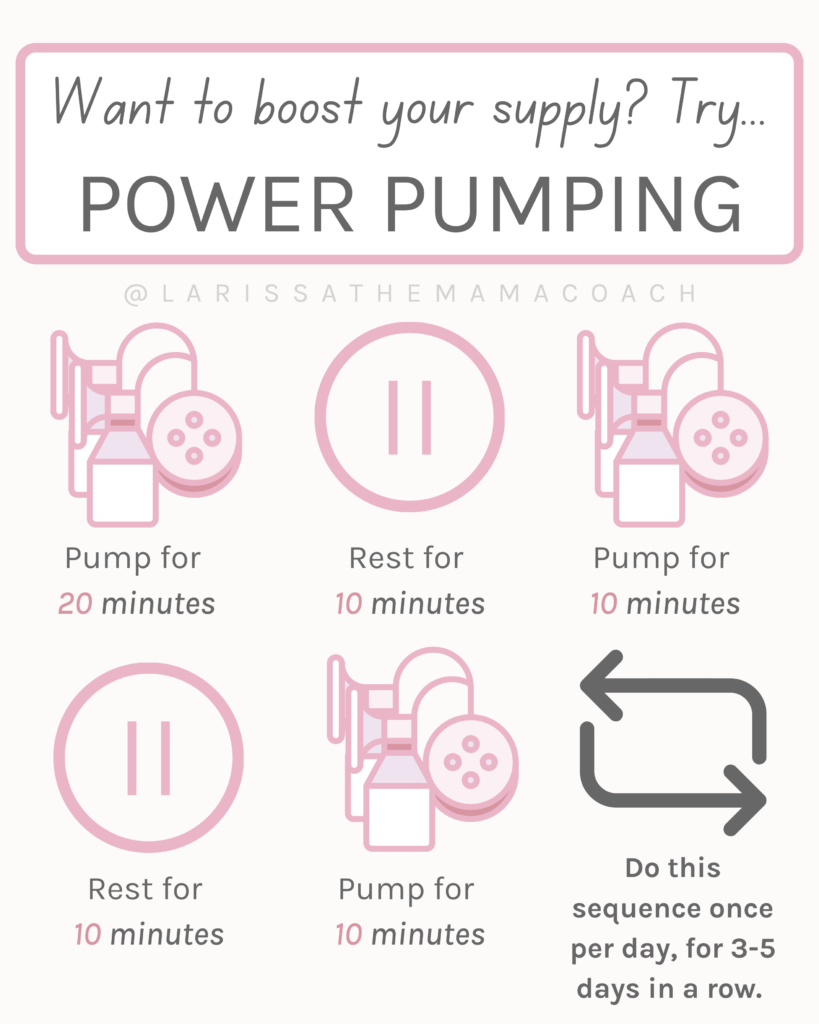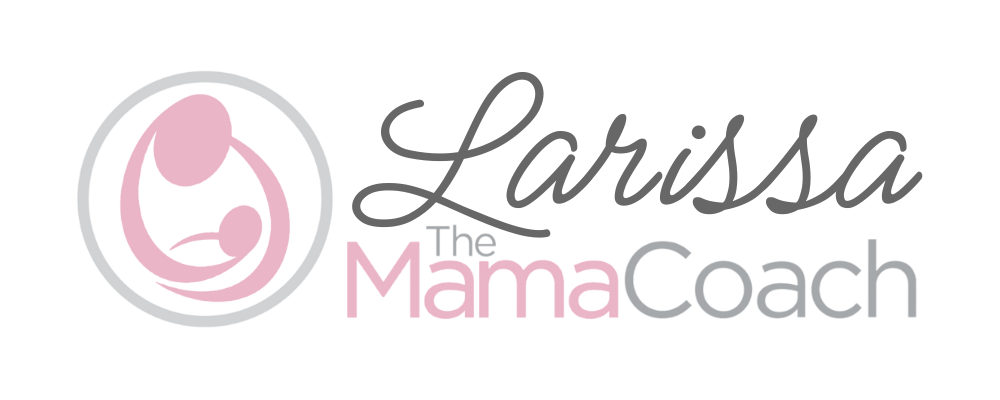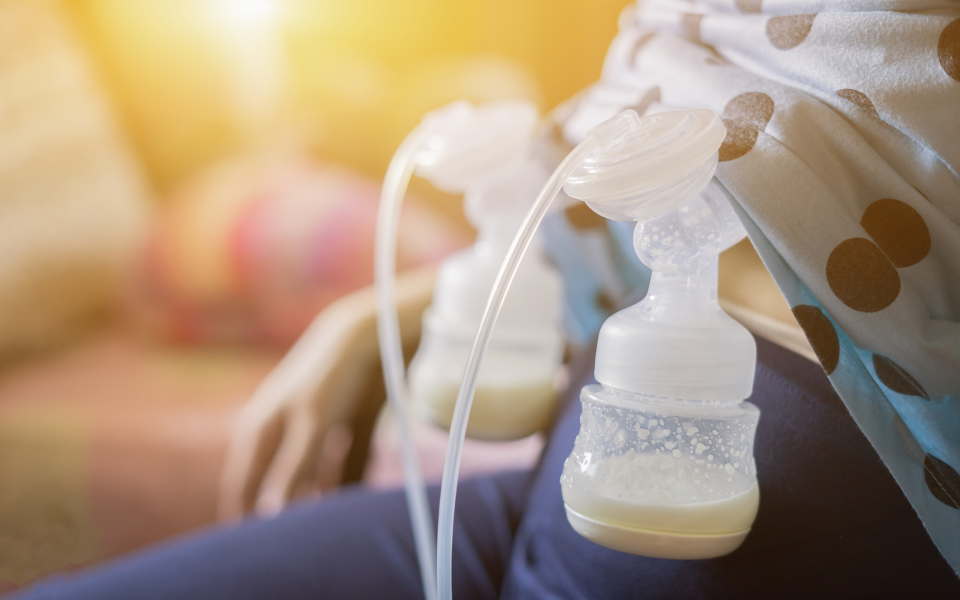If you are looking to increase your milk supply, power pumping is a strategy to try. It is most effective to get your supply back to baseline after a dip.
Power pumping is a pumping routine that mimics cluster feeding, or frequent feeding that naturally occurs during a growth spurt. The reason it can help improve supply is that it promotes significant breast emptying. An empty breast signals the body to make more milk. Power pumping is most effective when done once per day for 3-5 days in a row.

How to Power Pump
You will need a double electric pump, some water, snacks, and your favorite comfort show.
Use a hands-free pumping bra to allow for hands-on pumping (or multi-tasking!)
- Pump 20 minutes (or until the milk stops flowing)
- Rest for 10 minutes
- Pump for 10 minutes
- Rest for 10 minutes
- Pump for 10 minutes
Total time: 60 minutes
Short on time? Try an “express” version of Power Pumping:
- Pump 10 minutes
- Rest for 7 minutes
- Pump for 5 minutes
- Rest for 7 minutes
- Pump for 5 minutes
Total time: 34 minutes
Power Pumping Tips
Since power pumping is so time-consuming, the best time to utilize this technique is once you’ve put your baby down for bed in the evening and before you go to bed, as often this is their longest sleep stretch i.e. 8 pm – 11 pm. If your baby is not yet doing a predictably long stretch of sleep at bedtime, make sure your partner or other support is available to help you care for your baby during your marathon pump session. Power pumping is not meant to be a long-term plan, but rather a short-term strategy to increase supply.
Power pumping is for breast stimulation and building future milk supply. You likely will not see much milk pumped during the session. Your supply is naturally at its lowest during the evening. If this intervention is effective, you will see an increase in your supply in the days following the power pumping sessions.
Consider power pumping once a day for 3-5 days in a row if your goal is to increase supply. Once your supply has responded to the power pumping, you can go back to your regular feeding/pumping schedule.
Reasons to Try Power Pumping
- You are going back to work and finding it hard to pump frequently enough during the day
- You’ve been supplementing and you are hoping to increase your supply to meet your infant’s needs, and are unable to pump after all feeds
- Your period returned, which sometimes causes a temporary dip in milk supply
- Your infant is sleeping more consolidated stretches at night and you notice a drop in milk supply
- When infants begin to drop night feedings on their own, pumping is often not needed overnight. However, some breastfeeding parents are sensitive to going long stretches without emptying their breasts and may benefit from extra pumping
- You were recently sick, but are now feeling better, but experienced a drop in milk supply due to illness.
- Your child is on a nursing strike (refusing to breastfeed)
Power pumping may not be possible for you because of time constraints or obligations you may have (other children, your job, etc.), and that’s okay. I truly only recommend this intervention if you have the time and support available to you.
Here are some other tips for increasing milk supply when pumping:
- Try five minutes of hand expression per breast after each breastfeeding or pumping session
- Be sure your pump flanges fit correctly. Most people are using a flange size that’s too big. Measure your nipple (not areola), and try out a flange that is as close to that measurement as possible, in millimeters. It’s okay for the nipple to touch the sides of the flange tunnel
- Lubricate your pump flanges with coconut oil or lanolin-free nipple balm. This can make pumping more comfortable which can help the body to relax and release more milk
- Use breast massage just prior to and during feeding or pumping (known as hands-on pumping). You can also do this with a lactation massager
- Use heat packs on your breasts just prior to and during breastfeeding or pumping
- Play with your pump settings – try starting with expression mode instead of stimulation mode, or try going back to stimulation mode at multiple points during your session. If you have a pump that allows you to adjust the cycle rate, experiment with this setting to see if you notice more output at certain cycle speeds
- Cover your pump bottles: sometimes watching the pump bottles can be stressful and actually inhibit output. Cover the bottles with socks or a blanket so you aren’t so focused on output.
- Be sure you are eating and drinking enough to support breastmilk production. Drinking to thirst should be sufficient to support breastfeeding









